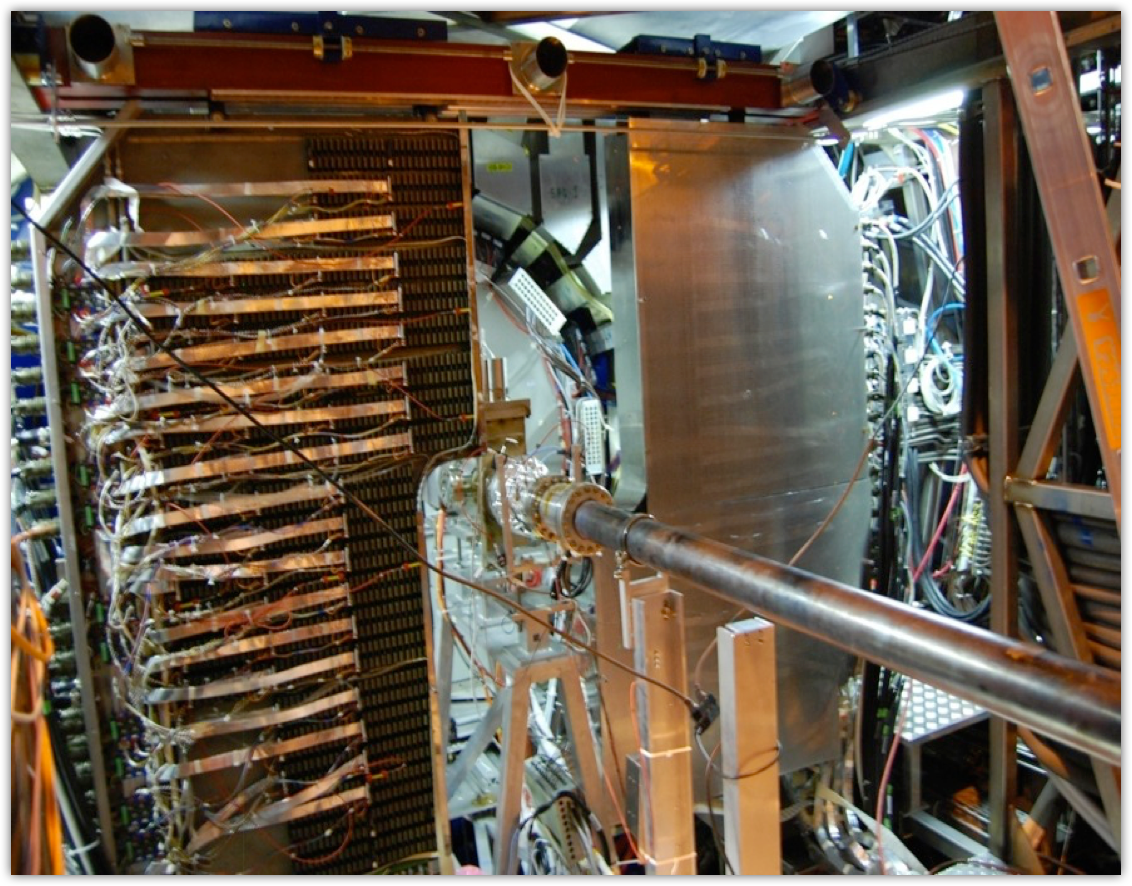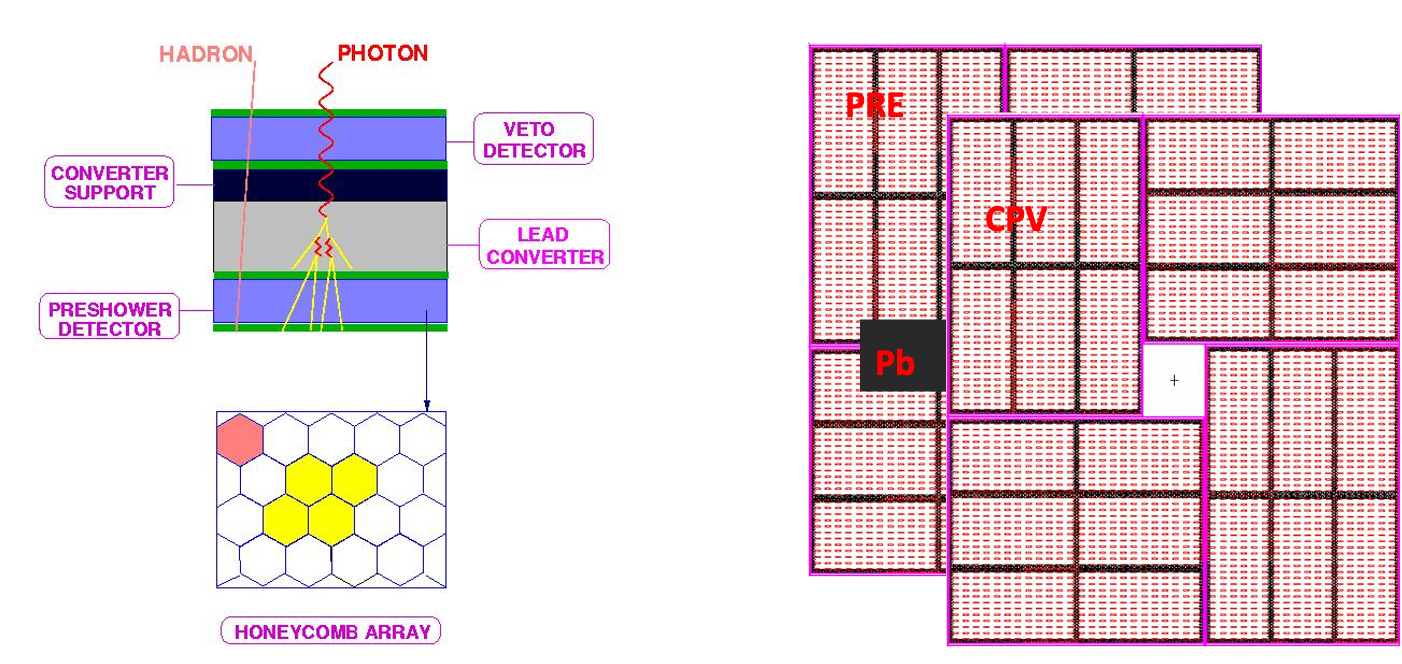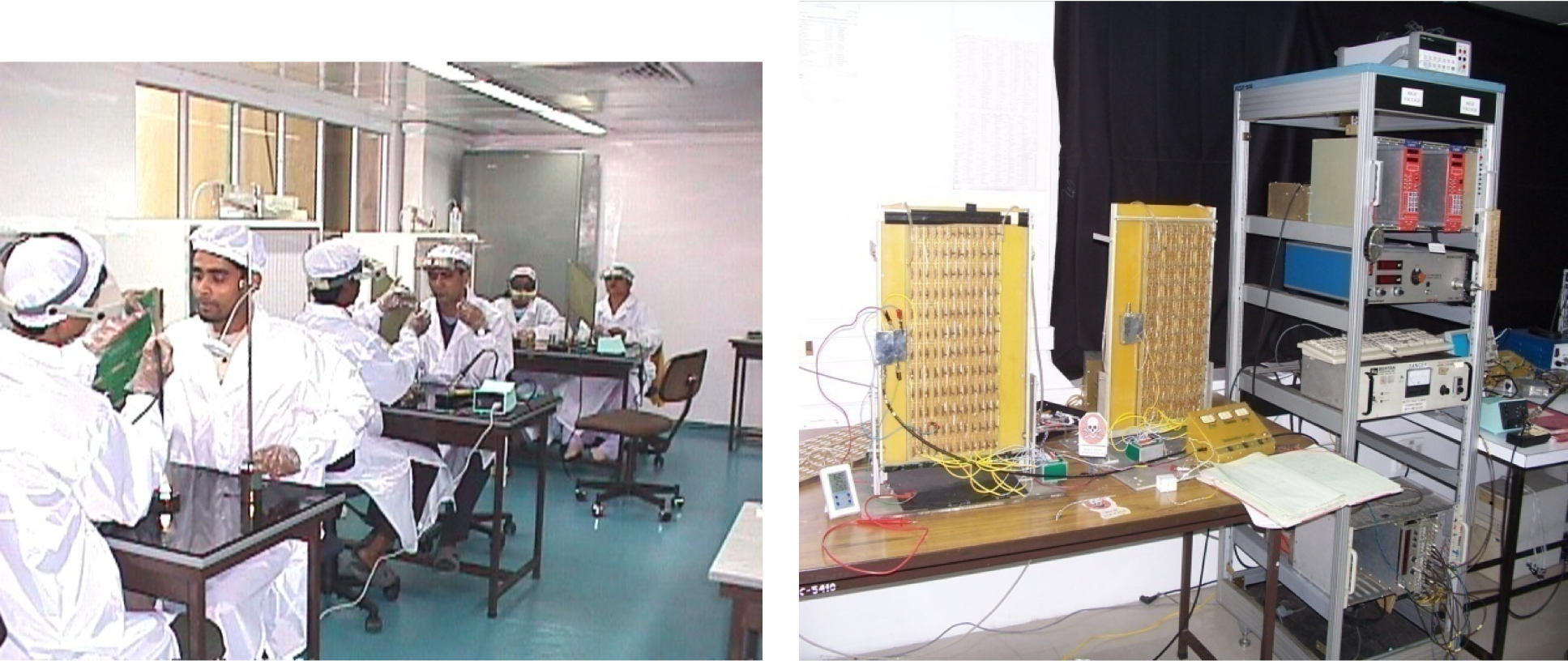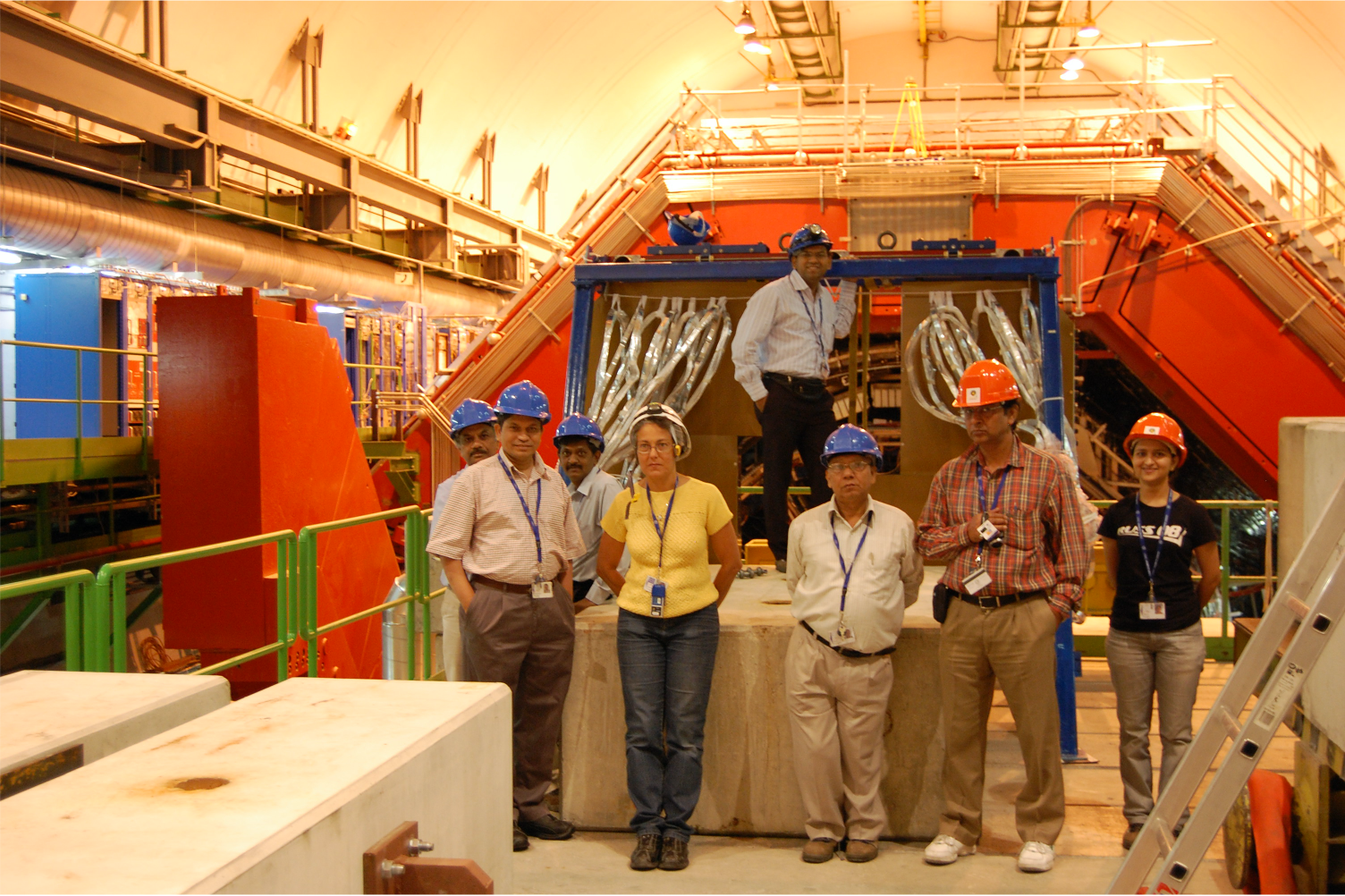Photon Multiplicity Detector

The Photon Multiplicity Detector (PMD) measures the multiplicity and spatial distribution of photons produced in collisions. It utilizes a veto detector as a first layer, to reject charged particles. Photons pass through a converter, initiating an electromagnetic shower in a second detector layer, where they produce large signals on several cells of its sensitive volume. Hadrons, on the other hand, normally affect only one cell and produce a signal representing minimum-ionizing particles.
The physics topics to be addressed by the PMD are closely interwoven with those of other ALICE detectors. The reaction plane determined from the PMD can be used to study flow parameters of various particle species in the TPC. While the azimuthal anisotropy can be determined independently using the PMD alone, a correlation between the anisotropy determined from the PMD and the FMD will be very useful to establish collective flow. One can study quarkonium suppression as a function of reaction plane in order to distinguish between rescattering effects and deconfinement as possible causes of suppression
A bit more detail:
PMD uses gas as the sensitive medium, as the other options were either too expensive or not compatible with ALICE baseline detectors. The choice of detector technology for use in a preshower detector is dictated by the considerations that a) charged paticles should be confined preferably to one cell, b) low-energy δ-electrons should be prevented from travelling to nearby cells and from causing crosstalk among adjacent channels, c) the technology should be amenable to modular design with minimum dead space at the boundaries and finally the detector should be placed in contact with the converter without large air gaps.
After surveying various technologies in the field of gas detectors, we have selected a novel design having honeycomb structure and wire readoud. The honeycomb cells are physically isolated from each other by thin metallic walls to contain δ-rays. The metallic wall of the honeycomb forms the common cathode and is kept at a large negative potential. The individual anode wires in the cells are kept at ground potential and connected to the readout electronics. Honeycomb geometry is selected because of its closeness to a circular approximation, providing almost circular equipotentials within a cell. This geometry also facilitates close packing of large arrays. The same design can be used for both the preshower part and the charged-particle veto.
The detector has the form of unit modules with dimensions that are convenient to handle during the assembly. The unit module consists of 24 x 24 hexagonal cells in a rhombus array. The rhombus shape of a honeycomb array provides minimum dead space at the boundaries. A set of 3 x 3 unit modules is contained within a supermodule. Each supermodule is a rhombus of side 80 cm and provides a gas-tight enclosure.






